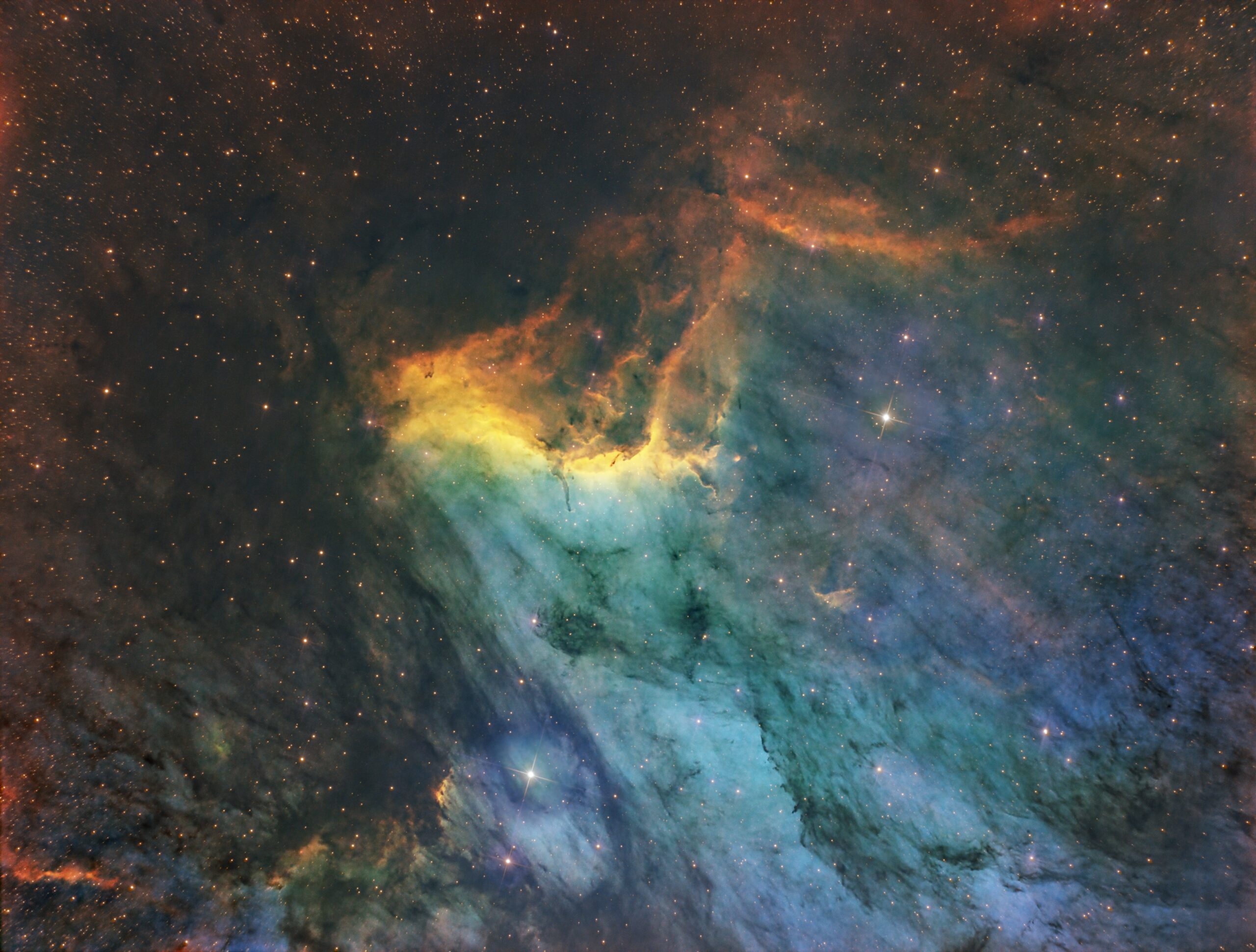Unravelling the Mysteries of the Pelican Nebula

Here is a blog article about the Pelican Nebula, written in UK English, similar in style and content to the referenced article about the Elephant’s Trunk Nebula:
Unravelling the Mysteries of the Pelican Nebula
Nestled within the vast expanse of the night sky lies a celestial wonder known as the Pelican Nebula. This captivating region of space, designated as IC 5070, has long intrigued astronomers and stargazers alike. With its peculiar shape resembling a pelican in flight, this nebula is a testament to the intricate beauty that exists within our universe.
The Pelican Nebula is located approximately 1,800 light-years from Earth in the constellation Cygnus, the Swan. It is part of a larger complex that includes the neighbouring North America Nebula (NGC 7000), named for its uncanny resemblance to the North American continent. Together, these two nebulae form a magnificent cosmic landscape that spans over 100 light-years in diameter.
At the heart of the Pelican Nebula lies a dense cloud of gas and dust, primarily composed of hydrogen. This stellar nursery is the birthplace of countless new stars, as the gravitational forces within the nebula cause the gas and dust to collapse and form protostars. Over millions of years, these protostars will evolve into fully-fledged stars, illuminating the surrounding nebula with their intense radiation.
One of the most striking features of the Pelican Nebula is the presence of dark dust lanes that crisscross its glowing expanse. These opaque regions are formed by dense concentrations of dust that absorb and block the light from the stars behind them. The contrast between the luminous gas and the dark dust creates a visually stunning composition, reminiscent of a celestial work of art.
The Pelican Nebula’s ethereal appearance is further enhanced by the presence of ionised hydrogen gas. As the ultraviolet radiation from the newly formed stars interacts with the hydrogen atoms, it strips away their electrons, causing the gas to emit a characteristic red glow. This process, known as ionisation, is responsible for the nebula’s vibrant colour palette, which ranges from deep red to delicate shades of pink and purple.
Observing the Pelican Nebula requires a dark, clear sky and a moderate-sized telescope. Due to its relatively low surface brightness, it can be challenging to discern its intricate details with the naked eye or small telescopes. However, long-exposure astrophotography has the ability to capture the nebula’s true beauty, revealing the delicate filaments and swirling patterns that make it so captivating.
As we continue to study the Pelican Nebula and its surroundings, we gain a deeper understanding of the complex processes that shape our universe. This celestial masterpiece serves as a reminder of the endless wonders that await discovery in the vast reaches of space. With each observation, we unravel another piece of the cosmic puzzle, marvelling at the intricate tapestry that makes up our awe-inspiring universe.
